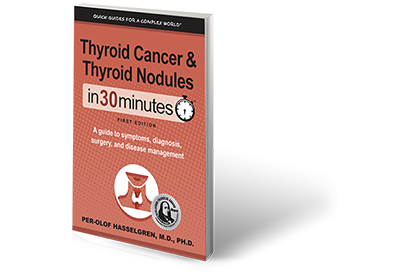The treatment for thyroid cancer has two main components:
- Surgery
- Radioiodine
Thyroid surgery
During thyroid surgery, the entire thyroid gland or part of the gland is removed:
- Total thyroidectomy – removal of the entire thyroid gland
- Lobectomy (hemithyroidectomy) – removal of half the gland (one of the lobes of the gland)
- Isthmusectomy – removal of the small “bridge” of thyroid tissue that connects the two lobes of the gland
Radioiodine
Some patients are treated with radioiodine (radioactive iodine) in addition to surgery. The radioiodine is given by mouth as a capsule or liquid. The need for radioiodine treatment is determined from several factors, including the patient’s age, the size of the cancer, the presence of lymph node metastases, and the spread of cancer outside the thyroid gland. In general radioiodine may be recommended for two reasons
- Prophylactic treatment (to reduce the risk of the cancer coming back after surgery – local recurrence)
- Treatment for recurrent cancer and/or spread to other areas of the body (distant metastases)
For more information on these topics, see Chapter 6: Thyroid Surgery and Chapter 7: Radioactive iodine treatment in Thyroid Cancer and Thyroid Nodules In 30 Minutes.
